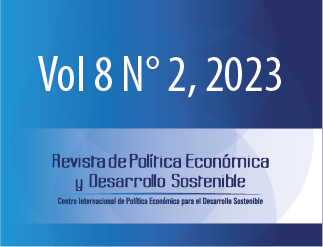The financial crisis in the United States from a behavioral and structural approach
DOI:
https://doi.org/10.15359/peds.8-2.1Keywords:
Economic crisis, Business cycle, Economic theory, Structuralism, Economic behaviorAbstract
The crisis of United States in 2008-2009 was a breaking point for economic thought and application, highlighting behavioral and structural problems. The objective of this paper is to investigate the conjunction of macro-structural factors, associated with economic policy, and micro-behavioral factors in the genesis of this crisis. First, a literature review of crisis theories is present, focusing on structural and behavioral approaches and showing how these two theories are complementary. Then, through the study of economic variables, the connection between these two explanatory theories in the context of the 2008-2009 crisis, were explained. This investigation allows to find evidence that suggests a relationship between both levels of analysis as an explanation to what happened.
References
Alvarado, H., y Herrera, F. (2010). Diálogo sobre el mercado y la crisis del capitalismo. Economía y Sociedad, 38(7), 127-160.
Bajo, O. y Monés, A. (2000). Curso de macroeconomía. Barcelona, España: Antoni Bosch, editor, S.A.
Costas, A. (2008). Algo más que una crisis financiera y económica, una crisis ética. La crisis de, 11-61.
González, J. Z., Pérez, J. F. M., y Montoya, F. R. (2009). La crisis financiera y económica del 2008. Origen y consecuencias en los Estados Unidos y México. El cotidiano, (157), 17-27.
Keynes, J. (2017). Teoría General de la Ocupación, el Interés y el Dinero. México: Fondo de cultura económica.
Kuhn, T. (2010). La Estructura de las revoluciones científicas. México: Editorial Fondo de Cultura Económica.
Larraín, F., y Sachs, J. (2013). Macroeconomía en la economía global. Santiago, Chile: Pearson Prentice Hall.
Nudelsman, S. (2013). Implicaciones de la crisis financiera y económica global en América Latina. Problemas del desarrollo, 44(175), 125-146.
Overton, H. T. (1960). A history of economic thought: Social ideas and economic theories from Quesnay to Keynes. New York, U.S.A: McGraw-Hill book company, Inc
Rochon L. y Rossi S. (2021). An Introduction to Macroeconomics: A Heterodox Approach to Economic Analysis. Cheltenham, United Kingdom: Edward Elgar Publishing.
Shiller, R. (2015). Exuberancia irracional. Barcelona, España: Libros PAPF, S. L. U.
Sustein, C. y Thaler, R. (2017). Un pequeño empujón. Bogotá, Colombia: Penguin Random House Grupo Editorial S.A.U.
Yang, J., & Kakabadse, N. (2010). Global financial crisis: implications for Chinese corporate governance.







